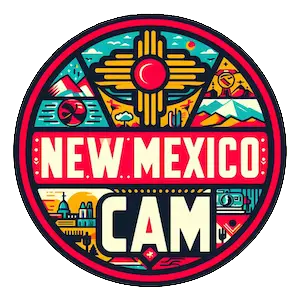Albuquerque Downtown, NM Weather Cams
Downtown Albuquerque Cam

The Heart of the Duke City: Tracing the Rich History of Downtown Albuquerque
Albuquerque Downtown, NM Weather Cams. In the heart of New Mexico’s largest city lies downtown Albuquerque, a vibrant urban center steeped in a rich tapestry of history, culture, and architectural marvels. From its humble beginnings as a Spanish colonial outpost to its present-day status as a thriving metropolitan hub, this area has witnessed the ebb and flow of civilizations, each leaving an indelible mark on its landscape.
The story of downtown Albuquerque begins with the Pueblo people, the indigenous inhabitants of the region who had established settlements along the Rio Grande long before the arrival of European settlers. Their influence can still be seen in the adobe structures and intricate pottery designs that have become synonymous with the city’s cultural identity.
In 1706, the Spanish colonists established the Villa de Alburquerque, a small farming community named after the Duke of Alburquerque, the viceroy of New Spain at the time. This modest settlement would eventually grow into the bustling metropolis we know today. The Old Town Plaza, situated in the heart of downtown, remains a testament to this colonial era, with its charming adobe buildings, winding alleyways, and the iconic San Felipe de Neri Church, which dates back to 1793.
As the 19th century dawned, Albuquerque found itself at the crossroads of the Santa Fe Trail, a crucial trade route that connected the American frontier with the bustling markets of Mexico. Downtown became a hub of commercial activity, with traders, merchants, and adventurers passing through, leaving an indelible mark on the city’s character.
The arrival of the Atchison, Topeka, and Santa Fe Railway in 1880 ushered in a new era of growth and prosperity for downtown Albuquerque. The once-sleepy town transformed into a bustling railroad hub, attracting settlers, entrepreneurs, and investors from across the country. Architectural gems like the Alvarado Hotel, built in 1902, and the Kimo Theatre, constructed in 1927, stand as reminders of this era’s opulence and grandeur.
As the 20th century progressed, downtown Albuquerque experienced a period of urban renewal and revitalization. The construction of the Albuquerque Convention Center in the 1970s and the redevelopment of the historic Railyards district in the early 2000s breathed new life into the area, attracting businesses, residents, and visitors alike.
Today, downtown Albuquerque is a vibrant tapestry of past and present, where historical landmarks coexist harmoniously with modern skyscrapers and trendy eateries. The area boasts a thriving arts and culture scene, with galleries, museums, and performance venues showcasing the city’s rich heritage and contemporary talents.
One of the most notable attractions in downtown Albuquerque is the Albuquerque Museum, which houses an impressive collection of art, artifacts, and exhibits that explore the region’s diverse cultural influences. The nearby KiMo Theatre, with its distinctive Pueblo Deco style, continues to captivate audiences with its live performances and classic movie screenings.
The heart of downtown is undoubtedly the Civic Plaza, a bustling outdoor space that hosts a variety of events, festivals, and gatherings throughout the year. From the annual Albuquerque Wine Festival to the vibrant Summerfest celebrations, this plaza has become a gathering place for locals and visitors alike, celebrating the city’s rich cultural tapestry.
As Albuquerque continues to evolve and grow, its downtown area remains a testament to its storied past and a beacon of its promising future. With each passing year, new chapters are added to the city’s history, intertwining with the rich tapestry of cultures and traditions that have defined this remarkable place for centuries.
For more information, visit the official Albuquerque, NM website.
